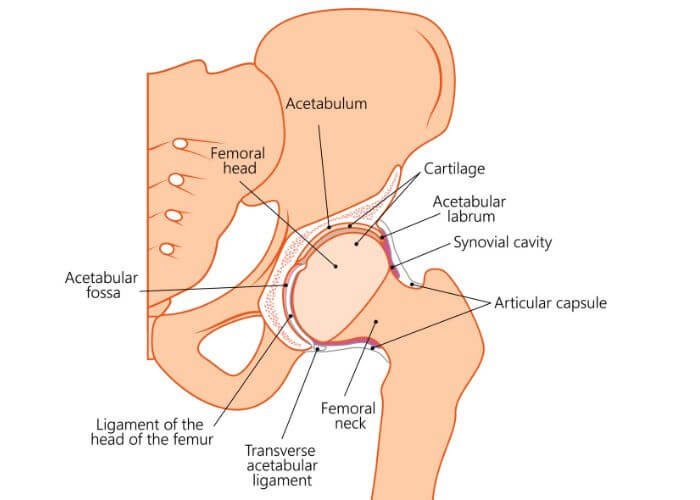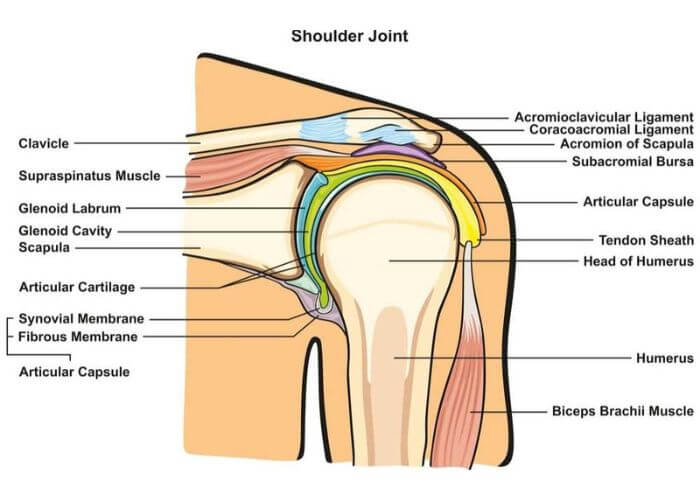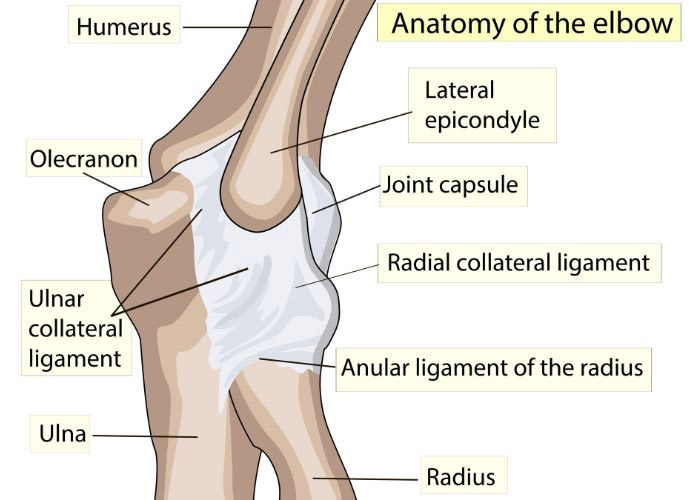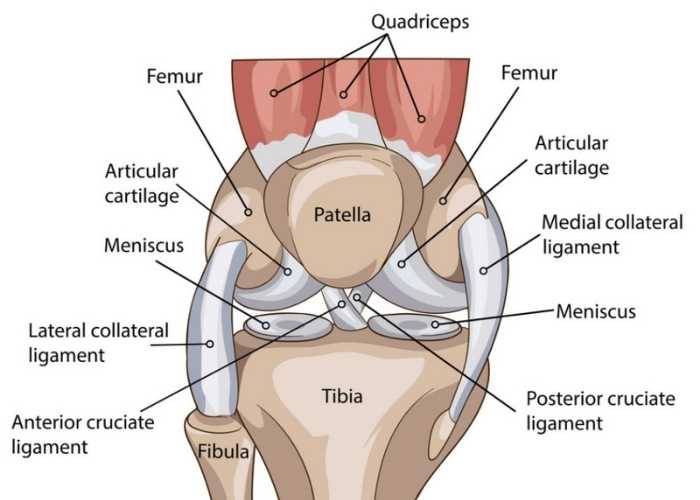What is a hip abductor tear?
The hip abductors are a group of four muscles that work collectively to perform hip abduction, or the movement of the leg away from the middle of the body. This muscle group includes the gluteus minimus, gluteus medius, gluteus maximus, and the tensor fascia lata which are found in the buttocks. The tendons attaching the gluteus medius and gluteus minimus are the most susceptible to an injury or tear due to their anatomical location.
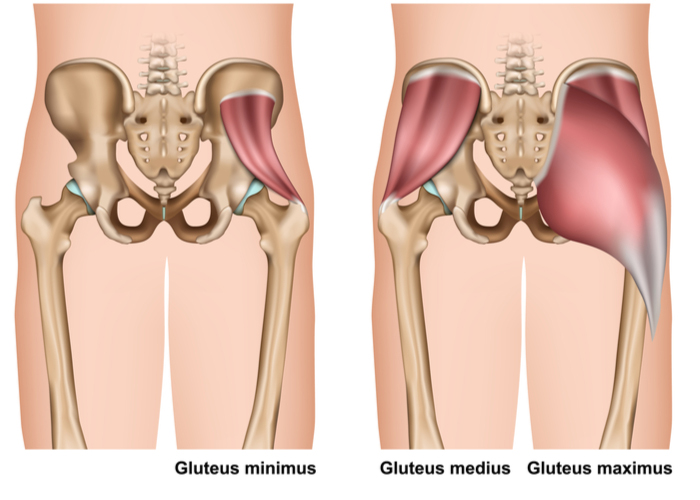
A blunt force trauma, such as a fall directly on the hip, can result in the partial or complete detachment of the connecting tendons from their attachment site on the femur (thigh bone) in an area called the greater trochanter. The most common cause of a hip abductor tear is degeneration of the tendon with aging. Patients often experience or have been diagnosed with trochanteric bursitis or hip bursitis. Patients with a confirmed hip abductor tear often experience pain in the side of the hip, buttocks, an abnormal gait, and lower back pain.
What is the treatment for a hip abductor tear?
Conservative therapies alone may be an adequate treatment measure for patients who sustain a small hip abductor tear that does not affect mobility and the tendons remain intact. Patients often have underlying trochanteric bursitis or hip bursitis. However, if a patient experiences a complete tendon rupture or conservative therapies are unsuccessful, surgical intervention to reattach the tendon may be necessary. Surgical repair of a hip abductor tear can be accomplished with a minimally invasive endoscopic technique or an open surgical procedure. In cases of a long-standing (chronic) tear, a reconstruction of the tendon may need to be done with allograft (cadaveric) tissue to strengthen the tendon for healing. Several factors are considered, such as the patient’s age, activity level, medical history, injury severity, associated injuries, tendon quality, muscle quality, and recovery goals, when designing an appropriate treatment plan. Dr. Ronak Mukesh Patel, orthopedic hip doctor, treats patients in Sugar Land, Pearland, and the Houston, Texas area, who have experienced a hip abductor tear and are in need of surgical repair.
How is an endoscopic hip abductor repair performed?
The endoscopic surgical technique offers a minimally invasive approach. A small camera (endoscope) and specialized surgical instruments are used to make the necessary revisions. To begin, a number of small “key-hole” incisions are created surrounding the hip joint and the endoscope is inserted through a portal. The images are relayed to a screen for Dr. Patel to methodically examine the hip joint structures and identify the damaged portions of the tendon. The specialized surgical instruments are employed to excise and remove the damaged tendon fragments and remove any other irregularities, such as bone spurs, bursitis, irritated and/or inflamed tissues. A tight band of tissue, known as the iliotibial (IT) band), can also be lengthened from its attachment site for better visualization of the tendon attachment site. Sutures are attached to the remaining tendon and passed through special surgical anchors embedded on the greater trochanter of the femur. Dr. Patel prefers to do a double-row repair which adds strength. By fastening the remaining tendon to these surgical anchors improves the chances of a more successful recovery.
How is an open hip abductor repair performed?
Dr. Patel may suggest an open abductor reconstruction for patients with large, complex abductor tears, poor quality tendon tissue, recurrent tears after prior surgery or those with abductor muscle atrophy. This technique involves using allograft (cadaver) tissue for the reconstruction. This added tissue strengthens the reconstruction for an increased chance of success and adds to the thickness of the tendon.
If a significant amount of time has passed between the injury and the surgical repair, tendon retraction and muscle atrophy may exist creating a more difficult surgical repair. Open reconstruction of the hip abductor or a complex tendon transfer procedure may be preferred in these instances. This procedure implements a tendon graft from either the patient (autograft) or donor tissue (allograft) to augment a repair, lengthen a retracted tendon, or reconstruct the tendon in its entirety in complex hips.
What is the recovery period like after a hip abductor repair/reconstruction?
The recovery period following a hip abductor repair or reconstruction is based on the severity and complexity of the injury as well as the surgical technique performed by Dr. Patel. Compliance with the post-operative care instructions provided by Dr. Patel can also greatly affect the recovery process. In general, patients in the Houston, Texas area can anticipate avoiding full weight-bearing for a period of 6 weeks after the surgery. A brace is utilized to protect the repair or reconstruction. While certain hip motions should be avoided, such as active abduction and passive adduction, hip movement may begin under the guidance of a physical therapist. Most patients can expect a full recovery in approximately 4 – 6 months.
Hip Abductor Surgeon

Have you been diagnosed with osteoarthritis or another degenerative hip condition? If so, you may be at an increased risk of sustaining an injury to the hip abductors. Patients with preexisting hip conditions or athletes participating in high-contact sports have a greater risk of tearing the hip abductors. Orthopedic hip surgeon, Doctor Ronak Mukesh Patel, is experienced in providing diagnosis and personalized treatment plans for patients in Houston, Sugar Land, and Pearland, TX who have sustained a hip injury. Contact Dr. Patel’s team today!
